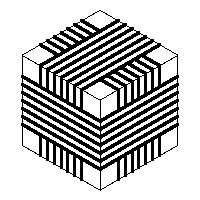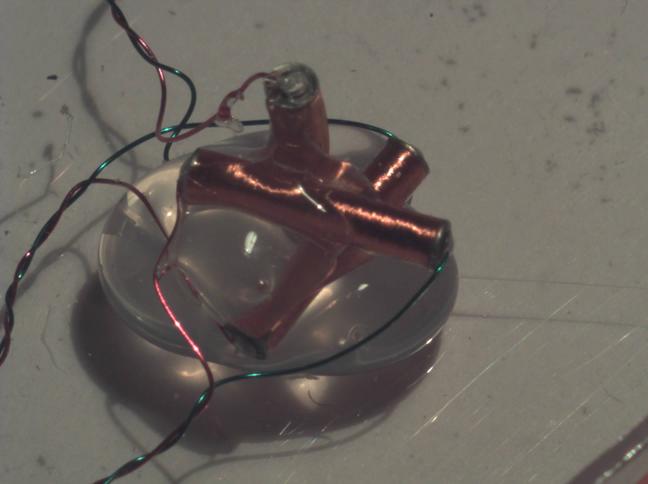Difference between revisions of "Open Source Electromagnetic Trackers"
From NAMIC Wiki
| Line 26: | Line 26: | ||
* http://home.comcast.net/~traneus/dry_emtrackertricoil.htm Pete's 6DOF EM tracker page. | * http://home.comcast.net/~traneus/dry_emtrackertricoil.htm Pete's 6DOF EM tracker page. | ||
| − | * http://rose.eu.org/2014/tag/plume another 6DOF EM tracker project. | + | * http://www.hackster.io/plume/plume http://rose.eu.org/2014/tag/plume another 6DOF EM tracker project. |
* Project started at [[2011_Summer_project_Week_Open_Source_Electromagnetic_Trackers_using_OpenIGTLink| 2011 Summer Project Week]] | * Project started at [[2011_Summer_project_Week_Open_Source_Electromagnetic_Trackers_using_OpenIGTLink| 2011 Summer Project Week]] | ||
Revision as of 22:11, 9 December 2014
Home < Open Source Electromagnetic TrackersIn the photo, each of the three receiver coils is ten millimeters long, and is a [Sonion] T 20 AG telecoil usually used in hearing aids.
Key Personnel
Goals of the Project
To teach the process of developing electromagnetic trackers for research, to foster an open community of researchers developing electromagnetic trackers, to develop open-source software and open-source hardware for working research electromagnetic trackers interfacing to Slicer through OpenIGTLink.
Current Progress
6DOF Electromagnetic Tracker Construction HOWTO
References
- http://home.comcast.net/~traneus/dry_emtrackertricoil.htm Pete's 6DOF EM tracker page.
- http://www.hackster.io/plume/plume http://rose.eu.org/2014/tag/plume another 6DOF EM tracker project.
- Project started at 2011 Summer Project Week
- Frederick H. Raab, Ernest B. Blood, Terry O. Steiner, Herbert R. Jones, "Magnetic Position and Orientation Tracking System", IEEE Transactions on Aerospace and Electronic systems, Vol. AES-15, No. 4, September 1979, pages 709-718. Iterative solution for 6DOF tracker.
- Frederick H. Raab, "Quasi-Static Magnetic-Field Technique for Determining Position and Orientation", IEEE Transactions on Geoscience and Remote Sensing, Vol. GE-19, No. 4, October 1981, pages 235-243. Direct solution for 6DOF tracker.
- Peter Traneus Anderson, "A Source of Accurately Calculable Quasi-Static Magnetic Fields", Ph.D. dissertation, University of Vermont, 2001, available from University of Vermont library, Burlington, Vermont, USA, also available from http://home.comcast.net/~traneus/thesis.pdf with four missing figures from http://home.comcast.net/~traneus/thesifig.pdf and still missing reference to U.S. patent 1,172,017. Demonstrates example of electronics design and of field-modeling algorithm. Coil design is optimized for academic publishability and not for practical usefulness.
- C.A. Nafis, V. Jensen, L. Beauregard, P.T. Anderson, "Method for estimating dynamic EM tracking accuracy of Surgical Navigation tools", SPIE Medical Imaging Proceedings, 2006. Reports low-cost accuracy-measuring techniques and results for various trackers.
- C. L. Dolph, "A current distribution for broadside arrays which optimizes the relationship between beam width and sidelobe level," Proceedings of the IRE (now part of the IEEE), Vol. 35, pp. 335-348, June, 1946. The original Dolph-Chebyshev Fourier-transform window article. Dolph-Chebyshev window can give 140 dB rejection in the stopband.
- Albert H. Nuttall, "Some Windows with Very Good Sidelobe Behavior", IEEE Transactions on Acoustics, Speech, and Signal Processing 29 (1) 84-91, doi:10.1109/TASSP.1981.1163506, "U.S. Government work not subject to U.S. copyright", in particular Figure 10 window for -L/2 < t < L/2: w(t) = (1/L) (10/32 + 15/32 cos(2pi t/L) + 6/32 cos(4pi t/L) + 1/32 cos(6pi t/L)) has first sidelobe at -61 dB and 42 dB/octave sidelobe rolloff.
- Eugene Paperno, "Suppression of magnetic noise in the fundamental-mode orthogonal fluxgate", Elsevier, Sensors and Actuators A 116 (2004) 405-409. Picotesla noise in 20 mm long 1 mm diameter fluxgate magnetometer.
- [| Nara etal, "Moore-Penrose generalized inverse of the gradient tensor in Euler's equation for locating a magnetic dipole"][| J. Appl. Phys. 115, 17E504 (2014)] on field-and-gradient single-coil 5DOF tracking closed-form algorithm.
- James M. Chappell, Samuel P. Drake, Cameron L. Seidel, Lachlan J. Gunn, Azhar Iqbal, Andrew Allison, Derek Abbott, "Geometric Algebra for Electrical and Electronic Engineers", Proceedings of the IEEE, Vol. 102, No. 9, September 2014, pages 1340 to 1363. Clifford algebra formulation of electromagnetics using vectors, bivectors, trivector.

